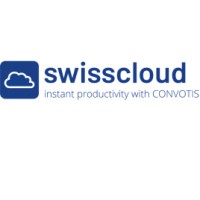
swisscloud by CONVOTIS Company Cyber Security Posture
swiss.cloudDie swiss cloud computing ag ist ein führender Schweizer Cloud-Provider für unabhängige Software-Hersteller (ISV) und ICT-Reseller mit Fokus KMU. swiss cloud computing transformiert bestehende Arbeitsumgebungen in ihre Swiss Cloud und stellt diese dann zentral zur Verfügung. Anstatt einzelne Arbeitsplätze lokal mit viel Aufwand aufzusetzen und zu konfigurieren, kann der ISV oder der ICT-Reseller über das Webportal der swiss cloud computing ag selbständig innert 15 Minuten einen kompletten Arbeitsplatz automatisiert einrichten. Dabei kann er unter anderem aus über 150 Programmen auswählen, wobei das Angebot laufend erweitert wird. Auch beispielsweise Office365 und Microsoft Teams sind so problemlos integrierbar. Dazu kommen E-Mail- und Backup-Lösungen, Cloud-Speicher sowie Business-Anwendungen für KMU. Über 5000 Kunden sind bereits auf der Plattform. Unsere gesamte IT-Infrastruktur und die Datenverarbeitung befindet sich in zwei Rechenzentren in der Schweiz. WELCOME TO THE CLOUD - unsere Produkte myAPPS mySERVER myDESKTOP myMAIL myFILESHARE myBACKUP
SC Company Details
swiss-cloud
7 employees
2260
541
IT Services and IT Consulting
swiss.cloud
Scan still pending
SWI_1149874
In-progress
Between 900 and 1000
This score is AI-generated and less favored by cyber insurers, who prefer the TPRM score.
 SC Global Score
SC Global Score.png)

swisscloud by CONVOTIS Company Scoring based on AI Models
| Model Name | Date | Description | Current Score Difference | Score |
|---|---|---|---|---|
| AVERAGE-Industry | 03-12-2025 | This score represents the average cybersecurity rating of companies already scanned within the same industry. It provides a benchmark to compare an individual company's security posture against its industry peers. | N/A | Between 900 and 1000 |
swisscloud by CONVOTIS Company Cyber Security News & History
| Entity | Type | Severity | Impact | Seen | Url ID | Details | View |
|---|---|---|---|---|---|---|---|
| Swiss Cloud | Ransomware | 100 | 5 | 05/2021 | SWI16495123 | Link | |
Rankiteo Explanation : Attack threatening the organization’s existenceDescription: Swiss cloud stated that they have been hit by a ransomware attack which seriously impacted its server infrastructure. The ransomware infection has impacted more than 6,500 customers of the provider, including the German HR software giant Sage. The company did not provide information about the security breach such as the family of malware involved, the ransom demanded, or the way attackers breached the hosting provider. | |||||||
swisscloud by CONVOTIS Company Subsidiaries

Die swiss cloud computing ag ist ein führender Schweizer Cloud-Provider für unabhängige Software-Hersteller (ISV) und ICT-Reseller mit Fokus KMU. swiss cloud computing transformiert bestehende Arbeitsumgebungen in ihre Swiss Cloud und stellt diese dann zentral zur Verfügung. Anstatt einzelne Arbeitsplätze lokal mit viel Aufwand aufzusetzen und zu konfigurieren, kann der ISV oder der ICT-Reseller über das Webportal der swiss cloud computing ag selbständig innert 15 Minuten einen kompletten Arbeitsplatz automatisiert einrichten. Dabei kann er unter anderem aus über 150 Programmen auswählen, wobei das Angebot laufend erweitert wird. Auch beispielsweise Office365 und Microsoft Teams sind so problemlos integrierbar. Dazu kommen E-Mail- und Backup-Lösungen, Cloud-Speicher sowie Business-Anwendungen für KMU. Über 5000 Kunden sind bereits auf der Plattform. Unsere gesamte IT-Infrastruktur und die Datenverarbeitung befindet sich in zwei Rechenzentren in der Schweiz. WELCOME TO THE CLOUD - unsere Produkte myAPPS mySERVER myDESKTOP myMAIL myFILESHARE myBACKUP
Access Data Using Our API

Get company history
.png)
SC Cyber Security News
Mastercard Launches Program to Support Cybersecurity Startups
Mastercard has expanded its startup engagement program with a focus on cybersecurity, fraud mitigation and payment resiliency.
5 Cybersecurity Stocks You Can Buy and Hold for the Next Decade
5 Cybersecurity Stocks You Can Buy and Hold for the Next Decade ; Palo Alto Networks (NASDAQ: PANW) ; CrowdStrike (NASDAQ: CRWD) ; Zscaler (NASDAQ: ...
Zones Eyes $3B Revenue Milestone As Demand For AI, Cybersecurity Soars
Zones CEO Firoz Lalji said he plans to focus on cybersecurity, AI enablement and service delivery.
Cybersecurity unicorn Cato Networks snags $359m, soaring to $4.8 billion valuation
Cato Networks, a maker of cloud-based, secured networks for large enterprises that lets remote workers connect to applications regardless of ...
Hackers tied to Iran preparing ‘calculated smear campaign’ on Trump, cyber agency says
Hackers suspected of working for Iran are threatening to leak allegedly stolen data in a bid to undermine President Donald Trump, ...
Vermont’s Dual-Enrollment Cybersecurity Certificate
A Vermont partnership gives high school students hands-on experience in cybersecurity and a conditional acceptance to a local college.
Cybersecurity Flaws Plagued EU Border Control System, Audit Shows
An information-sharing system used by EU border forces to flag illegal immigrants and suspected criminals in real time was rife with software ...
TA829 and UNK_GreenSec Share Tactics and Infrastructure in Ongoing Malware Campaigns
TA829 is something of an unusual hacking group in the threat landscape given its ability to conduct both espionage as well as financially ...
CrowdStrike or Check Point: Bank of America Selects the Superior Cybersecurity Stock to Buy
Take advantage of TipRanks Premium for 50% off! Unlock powerful investing tools, advanced data, and expert analyst insights to help you invest with confidence.

SC Similar Companies
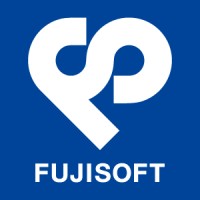
FUJISOFT INCORPORATED
Fujisoft is one of the largest Independent IT solution vendors in Japan with strong experience in mobile technology, digital information equipment's, consumer electronics etc .As an independent IT company, Fujisoft continues to remain unique, aggressively helping build the future of ubiquitous and
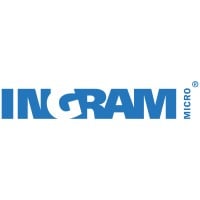
Ingram Micro
Ingram Micro is a leading technology company for the global information technology ecosystem. With the ability to reach nearly 90% of the global population, we play a vital role in the worldwide IT sales channel, bringing products and services from technology manufacturers and cloud providers to a h

Virtusa
Virtusa Corporation provides digital engineering and technology services to Forbes Global 2000 companies worldwide. Our Engineering First approach ensures we can execute all ideas and creatively solve pressing business challenges. With industry expertise and empowered agile teams, we prioritize exec
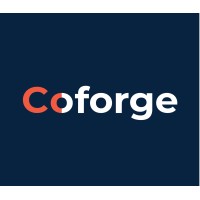
Coforge
Coforge is a global digital services and solutions provider, that leverages emerging technologies and deep domain expertise to deliver real-world business impact for its clients. A focus on select industries, a deep domain understanding of the underlying processes of those industries and partners

Asurion
As the world’s leading tech care company, Asurion eliminates the fears and frustrations associated with technology, to ensure our 300 million customers get the most out of their devices, appliances and connections. We provide insurance, repair, replacement, installation and 24/7 support for everythi
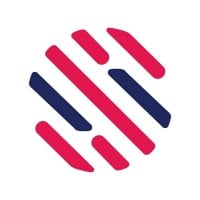
Sutherland
Artificial Intelligence. Automation. Cloud engineering. Advanced analytics. For business leaders, these are key factors of success. For us, they’re our core expertise. At Sutherland, we are a leading global business and digital transformation partner. Our services span a diversified range of categ

Frequently Asked Questions (FAQ) on Cybersecurity Incidents
SC CyberSecurity History Information
Total Incidents: According to Rankiteo, SC has faced 1 incidents in the past.
Incident Types: The types of cybersecurity incidents that have occurred include ['Ransomware'].
Total Financial Loss: The total financial loss from these incidents is estimated to be {total_financial_loss}.
Cybersecurity Posture: The company's overall cybersecurity posture is described as Die swiss cloud computing ag ist ein führender Schweizer Cloud-Provider für unabhängige Software-Hersteller (ISV) und ICT-Reseller mit Fokus KMU. swiss cloud computing transformiert bestehende Arbeitsumgebungen in ihre Swiss Cloud und stellt diese dann zentral zur Verfügung. Anstatt einzelne Arbeitsplätze lokal mit viel Aufwand aufzusetzen und zu konfigurieren, kann der ISV oder der ICT-Reseller über das Webportal der swiss cloud computing ag selbständig innert 15 Minuten einen kompletten Arbeitsplatz automatisiert einrichten. Dabei kann er unter anderem aus über 150 Programmen auswählen, wobei das Angebot laufend erweitert wird. Auch beispielsweise Office365 und Microsoft Teams sind so problemlos integrierbar. Dazu kommen E-Mail- und Backup-Lösungen, Cloud-Speicher sowie Business-Anwendungen für KMU. Über 5000 Kunden sind bereits auf der Plattform. Unsere gesamte IT-Infrastruktur und die Datenverarbeitung befindet sich in zwei Rechenzentren in der Schweiz. WELCOME TO THE CLOUD - unsere Produkte myAPPS mySERVER myDESKTOP myMAIL myFILESHARE myBACKUP.
Detection and Response: The company detects and responds to cybersecurity incidents through {description_of_detection_and_response_process}.
Incident Details
Incident 1: Ransomware Attack
Title: {Incident_Title}
Description: {Brief_description_of_the_incident}
Date Detected: {Detection_Date}
Date Publicly Disclosed: {Disclosure_Date}
Date Resolved: {Resolution_Date}
Type: {Type_of_Attack}
Attack Vector: {Attack_Vector}
Vulnerability Exploited: {Vulnerability}
Threat Actor: {Threat_Actor}
Motivation: {Motivation}
Incident 2: Data Breach
Title: {Incident_Title}
Description: {Brief_description_of_the_incident}
Date Detected: {Detection_Date}
Date Publicly Disclosed: {Disclosure_Date}
Date Resolved: {Resolution_Date}
Type: {Type_of_Attack}
Attack Vector: {Attack_Vector}
Vulnerability Exploited: {Vulnerability}
Threat Actor: {Threat_Actor}
Motivation: {Motivation}
Common Attack Types: As of now, the company has not encountered any reported incidents involving common cyberattacks.
Identification of Attack Vectors: The company identifies the attack vectors used in incidents through {description_of_identification_process}.
Impact of the Incidents
Incident 1: Ransomware Attack
Financial Loss: {Financial_Loss}
Data Compromised: {Data_Compromised}
Systems Affected: {Systems_Affected}
Downtime: {Downtime}
Operational Impact: {Operational_Impact}
Conversion Rate Impact: {Conversion_Rate_Impact}
Revenue Loss: {Revenue_Loss}
Customer Complaints: {Customer_Complaints}
Brand Reputation Impact: {Brand_Reputation_Impact}
Legal Liabilities: {Legal_Liabilities}
Identity Theft Risk: {Identity_Theft_Risk}
Payment Information Risk: {Payment_Information_Risk}
Incident 2: Data Breach
Financial Loss: {Financial_Loss}
Data Compromised: {Data_Compromised}
Systems Affected: {Systems_Affected}
Downtime: {Downtime}
Operational Impact: {Operational_Impact}
Conversion Rate Impact: {Conversion_Rate_Impact}
Revenue Loss: {Revenue_Loss}
Customer Complaints: {Customer_Complaints}
Brand Reputation Impact: {Brand_Reputation_Impact}
Legal Liabilities: {Legal_Liabilities}
Identity Theft Risk: {Identity_Theft_Risk}
Payment Information Risk: {Payment_Information_Risk}
Average Financial Loss: The average financial loss per incident is {average_financial_loss}.
Commonly Compromised Data Types: The types of data most commonly compromised in incidents are {list_of_commonly_compromised_data_types}.
Incident 1: Ransomware Attack
Entity Name: {Entity_Name}
Entity Type: {Entity_Type}
Industry: {Industry}
Location: {Location}
Size: {Size}
Customers Affected: {Customers_Affected}
Incident 2: Data Breach
Entity Name: {Entity_Name}
Entity Type: {Entity_Type}
Industry: {Industry}
Location: {Location}
Size: {Size}
Customers Affected: {Customers_Affected}
Response to the Incidents
Incident 1: Ransomware Attack
Incident Response Plan Activated: {Yes/No}
Third Party Assistance: {Yes/No}
Law Enforcement Notified: {Yes/No}
Containment Measures: {Containment_Measures}
Remediation Measures: {Remediation_Measures}
Recovery Measures: {Recovery_Measures}
Communication Strategy: {Communication_Strategy}
Adaptive Behavioral WAF: {Adaptive_Behavioral_WAF}
On-Demand Scrubbing Services: {On_Demand_Scrubbing_Services}
Network Segmentation: {Network_Segmentation}
Enhanced Monitoring: {Enhanced_Monitoring}
Incident 2: Data Breach
Incident Response Plan Activated: {Yes/No}
Third Party Assistance: {Yes/No}
Law Enforcement Notified: {Yes/No}
Containment Measures: {Containment_Measures}
Remediation Measures: {Remediation_Measures}
Recovery Measures: {Recovery_Measures}
Communication Strategy: {Communication_Strategy}
Adaptive Behavioral WAF: {Adaptive_Behavioral_WAF}
On-Demand Scrubbing Services: {On_Demand_Scrubbing_Services}
Network Segmentation: {Network_Segmentation}
Enhanced Monitoring: {Enhanced_Monitoring}
Incident Response Plan: The company's incident response plan is described as {description_of_incident_response_plan}.
Third-Party Assistance: The company involves third-party assistance in incident response through {description_of_third_party_involvement}.
Data Breach Information
Incident 2: Data Breach
Type of Data Compromised: {Type_of_Data}
Number of Records Exposed: {Number_of_Records}
Sensitivity of Data: {Sensitivity_of_Data}
Data Exfiltration: {Yes/No}
Data Encryption: {Yes/No}
File Types Exposed: {File_Types}
Personally Identifiable Information: {Yes/No}
Prevention of Data Exfiltration: The company takes the following measures to prevent data exfiltration: {description_of_prevention_measures}.
Handling of PII Incidents: The company handles incidents involving personally identifiable information (PII) through {description_of_handling_process}.
Ransomware Information
Incident 1: Ransomware Attack
Ransom Demanded: {Ransom_Amount}
Ransom Paid: {Ransom_Paid}
Ransomware Strain: {Ransomware_Strain}
Data Encryption: {Yes/No}
Data Exfiltration: {Yes/No}
Ransom Payment Policy: The company's policy on paying ransoms in ransomware incidents is described as {description_of_ransom_payment_policy}.
Data Recovery from Ransomware: The company recovers data encrypted by ransomware through {description_of_data_recovery_process}.
Regulatory Compliance
Incident 1: Ransomware Attack
Regulations Violated: {Regulations_Violated}
Fines Imposed: {Fines_Imposed}
Legal Actions: {Legal_Actions}
Regulatory Notifications: {Regulatory_Notifications}
Incident 2: Data Breach
Regulations Violated: {Regulations_Violated}
Fines Imposed: {Fines_Imposed}
Legal Actions: {Legal_Actions}
Regulatory Notifications: {Regulatory_Notifications}
Regulatory Frameworks: The company complies with the following regulatory frameworks regarding cybersecurity: {list_of_regulatory_frameworks}.
Ensuring Regulatory Compliance: The company ensures compliance with regulatory requirements through {description_of_compliance_measures}.
Lessons Learned and Recommendations
Incident 1: Ransomware Attack
Lessons Learned: {Lessons_Learned}
Incident 2: Data Breach
Lessons Learned: {Lessons_Learned}
Incident 1: Ransomware Attack
Recommendations: {Recommendations}
Incident 2: Data Breach
Recommendations: {Recommendations}
Key Lessons Learned: The key lessons learned from past incidents are {list_of_key_lessons_learned}.
Implemented Recommendations: The company has implemented the following recommendations to improve cybersecurity: {list_of_implemented_recommendations}.
References
Additional Resources: Stakeholders can find additional resources on cybersecurity best practices at {list_of_additional_resources}.
Investigation Status
Incident 1: Ransomware Attack
Investigation Status: {Investigation_Status}
Incident 2: Data Breach
Investigation Status: {Investigation_Status}
Communication of Investigation Status: The company communicates the status of incident investigations to stakeholders through {description_of_communication_process}.
Stakeholder and Customer Advisories
Incident 1: Ransomware Attack
Stakeholder Advisories: {Stakeholder_Advisories}
Customer Advisories: {Customer_Advisories}
Incident 2: Data Breach
Stakeholder Advisories: {Stakeholder_Advisories}
Customer Advisories: {Customer_Advisories}
Advisories Provided: The company provides the following advisories to stakeholders and customers following an incident: {description_of_advisories_provided}.
Initial Access Broker
Incident 1: Ransomware Attack
Entry Point: {Entry_Point}
Reconnaissance Period: {Reconnaissance_Period}
Backdoors Established: {Backdoors_Established}
High Value Targets: {High_Value_Targets}
Data Sold on Dark Web: {Yes/No}
Incident 2: Data Breach
Entry Point: {Entry_Point}
Reconnaissance Period: {Reconnaissance_Period}
Backdoors Established: {Backdoors_Established}
High Value Targets: {High_Value_Targets}
Data Sold on Dark Web: {Yes/No}
Monitoring and Mitigation of Initial Access Brokers: The company monitors and mitigates the activities of initial access brokers through {description_of_monitoring_and_mitigation_measures}.
Post-Incident Analysis
Incident 1: Ransomware Attack
Root Causes: {Root_Causes}
Corrective Actions: {Corrective_Actions}
Incident 2: Data Breach
Root Causes: {Root_Causes}
Corrective Actions: {Corrective_Actions}
Post-Incident Analysis Process: The company's process for conducting post-incident analysis is described as {description_of_post_incident_analysis_process}.
Corrective Actions Taken: The company has taken the following corrective actions based on post-incident analysis: {list_of_corrective_actions_taken}.
Additional Questions
General Information
Ransom Payment History: The company has {paid/not_paid} ransoms in the past.
Last Ransom Demanded: The amount of the last ransom demanded was {last_ransom_amount}.
Last Attacking Group: The attacking group in the last incident was {last_attacking_group}.
Incident Details
Most Recent Incident Detected: The most recent incident detected was on {most_recent_incident_detected_date}.
Most Recent Incident Publicly Disclosed: The most recent incident publicly disclosed was on {most_recent_incident_publicly_disclosed_date}.
Most Recent Incident Resolved: The most recent incident resolved was on {most_recent_incident_resolved_date}.
Impact of the Incidents
Highest Financial Loss: The highest financial loss from an incident was {highest_financial_loss}.
Most Significant Data Compromised: The most significant data compromised in an incident was {most_significant_data_compromised}.
Most Significant System Affected: The most significant system affected in an incident was {most_significant_system_affected}.
Response to the Incidents
Third-Party Assistance in Most Recent Incident: The third-party assistance involved in the most recent incident was {third_party_assistance_in_most_recent_incident}.
Containment Measures in Most Recent Incident: The containment measures taken in the most recent incident were {containment_measures_in_most_recent_incident}.
Data Breach Information
Most Sensitive Data Compromised: The most sensitive data compromised in a breach was {most_sensitive_data_compromised}.
Number of Records Exposed: The number of records exposed in the most significant breach was {number_of_records_exposed}.
Ransomware Information
Highest Ransom Demanded: The highest ransom demanded in a ransomware incident was {highest_ransom_demanded}.
Highest Ransom Paid: The highest ransom paid in a ransomware incident was {highest_ransom_paid}.
Regulatory Compliance
Highest Fine Imposed: The highest fine imposed for a regulatory violation was {highest_fine_imposed}.
Most Significant Legal Action: The most significant legal action taken for a regulatory violation was {most_significant_legal_action}.
Lessons Learned and Recommendations
Most Significant Lesson Learned: The most significant lesson learned from past incidents was {most_significant_lesson_learned}.
Most Significant Recommendation Implemented: The most significant recommendation implemented to improve cybersecurity was {most_significant_recommendation_implemented}.
References
Most Recent Source: The most recent source of information about an incident is {most_recent_source}.
Most Recent URL for Additional Resources: The most recent URL for additional resources on cybersecurity best practices is {most_recent_url}.
Investigation Status
Current Status of Most Recent Investigation: The current status of the most recent investigation is {current_status_of_most_recent_investigation}.
Stakeholder and Customer Advisories
Most Recent Stakeholder Advisory: The most recent stakeholder advisory issued was {most_recent_stakeholder_advisory}.
Most Recent Customer Advisory: The most recent customer advisory issued was {most_recent_customer_advisory}.
Initial Access Broker
Most Recent Entry Point: The most recent entry point used by an initial access broker was {most_recent_entry_point}.
Most Recent Reconnaissance Period: The most recent reconnaissance period for an incident was {most_recent_reconnaissance_period}.
Post-Incident Analysis
Most Significant Root Cause: The most significant root cause identified in post-incident analysis was {most_significant_root_cause}.
Most Significant Corrective Action: The most significant corrective action taken based on post-incident analysis was {most_significant_corrective_action}.
What Do We Measure?
















Every week, Rankiteo analyzes billions of signals to give organizations a sharper, faster view of emerging risks. With deeper, more actionable intelligence at their fingertips, security teams can outpace threat actors, respond instantly to Zero-Day attacks, and dramatically shrink their risk exposure window.
These are some of the factors we use to calculate the overall score:
Identify exposed access points, detect misconfigured SSL certificates, and uncover vulnerabilities across the network infrastructure.
Gain visibility into the software components used within an organization to detect vulnerabilities, manage risk, and ensure supply chain security.
Monitor and manage all IT assets and their configurations to ensure accurate, real-time visibility across the company's technology environment.
Leverage real-time insights on active threats, malware campaigns, and emerging vulnerabilities to proactively defend against evolving cyberattacks.




